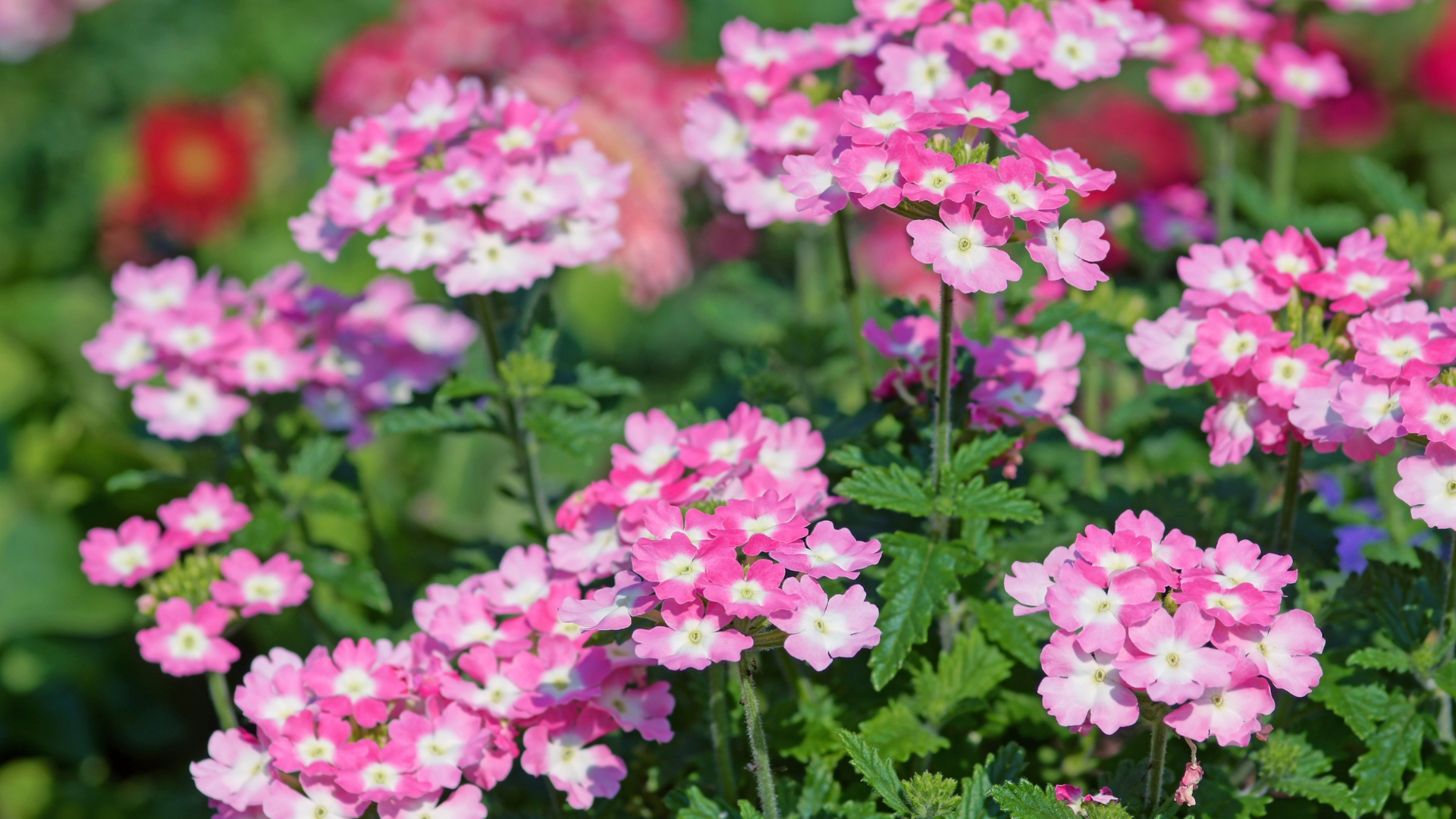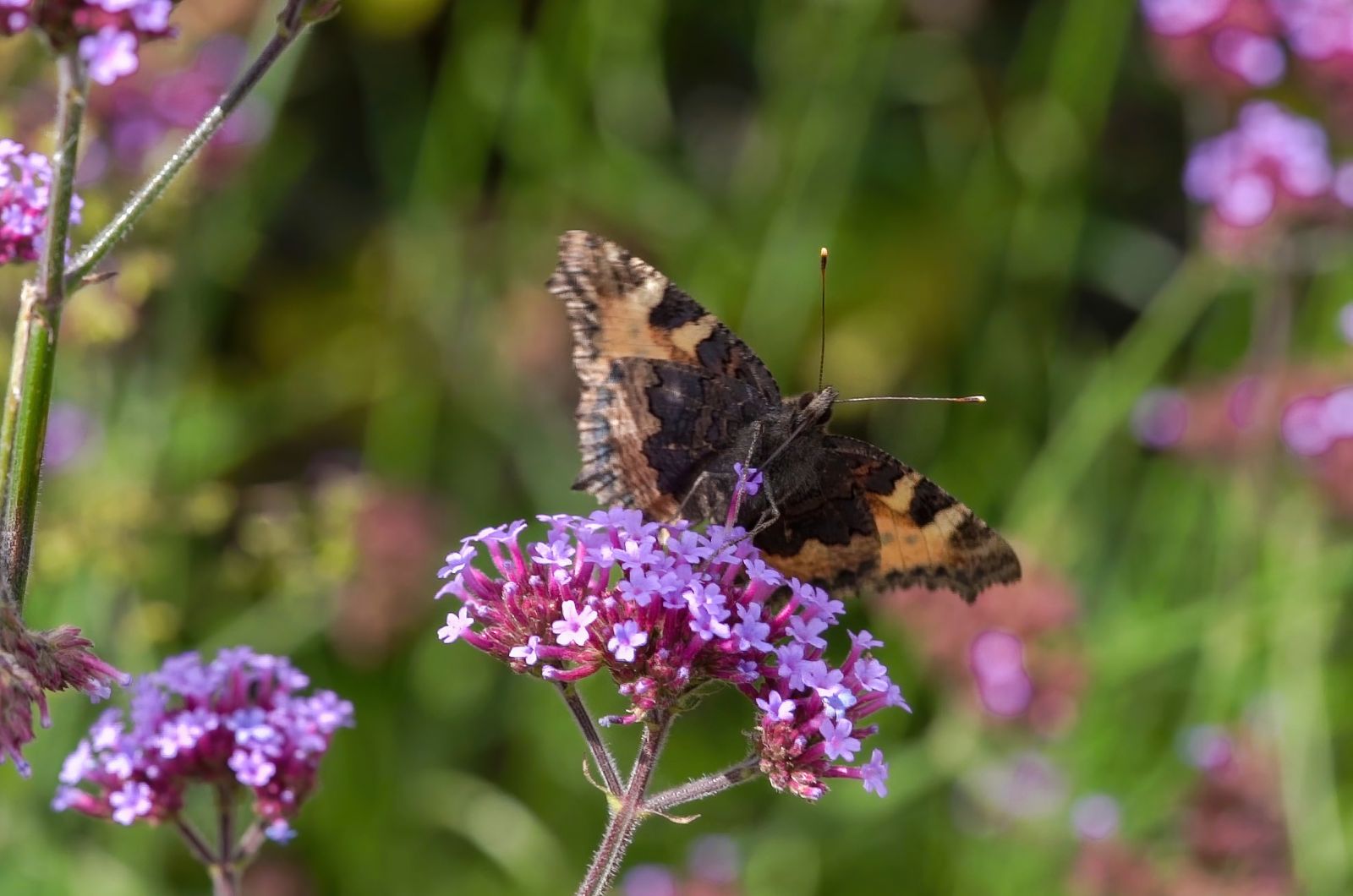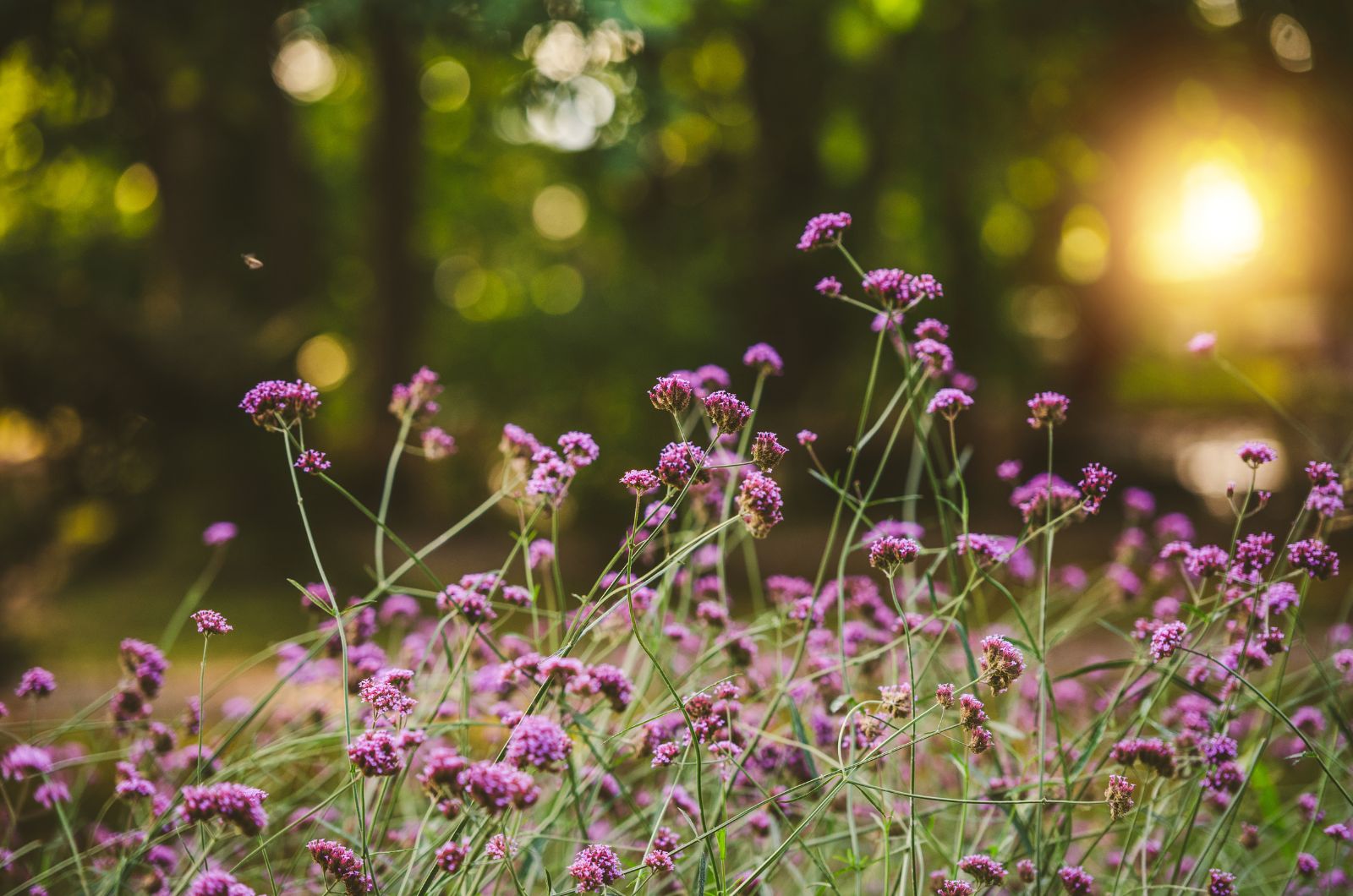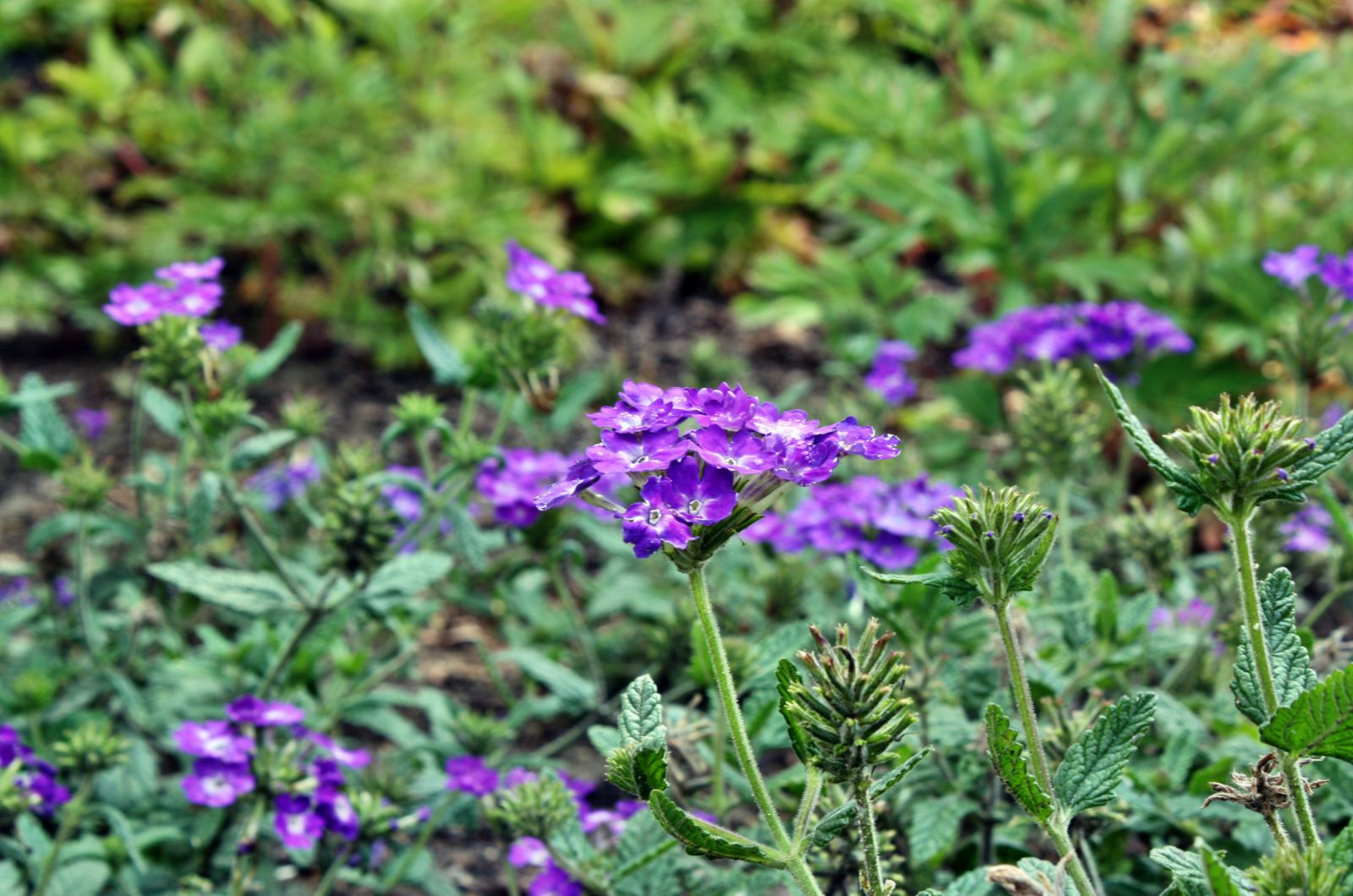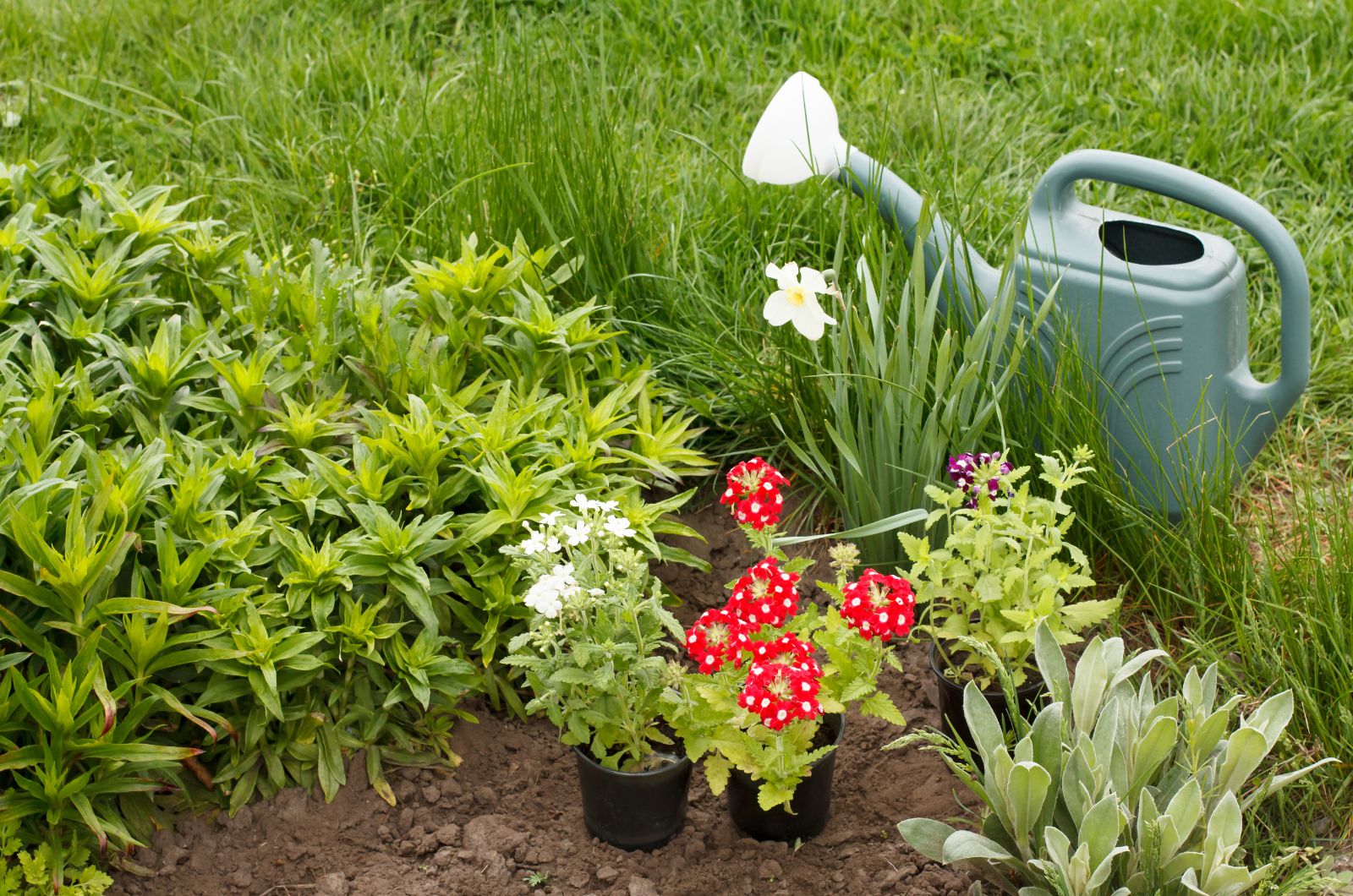It may be hard to decide on the next plant for a flower bed, but if you want your outdoor space to stand out, I have a perfect plant for you.
Verbena is a stunning American native species renowned for its gorgeous blooms that remain on the plant from spring all the way to the first frost.
Its beauty is the reason why it became famous among growers and is seen in gardens worldwide. Butterflies and bees adore feeding on verbena blooms, which is another benefit of the plant.
In this article, I’ll show you how to grow verbena and get an abundance of blossoms that will elevate your outdoor space and attract beneficial creatures!
Let’s get started!
Species And Varieties To Select
Your journey with a verbena plant should start with selecting a variety. Most verbenas are hardy in USDA zones 8 through 11 but, if you live in cooler climates, you can always grow it as an annual plant.
There are over 200 species of these plants, so selecting the one for you may be the hardest part of all.
If you live in colder zones, you should opt for more resistant varieties such as Verbena hastata, which is commonly referred to as Blue vervain.
This verbena features stunning purplish-blue blossoms that emerge from tall stalks and are beloved by pollinators.
The hastata varieties are native to North America and you can find them growing in damp meadows. This particular verbena ranks among the most resilient to cold temperatures, enduring even as low as -40 degrees Fahrenheit.
An alternative, and perhaps more commonly known, variety is Verbena bonariensis. It isn’t as cold-hardy as blue vervain so you should grow it as a perennial only if you live in USDA zones 7 and above.
Take some time when looking for a variety of these year-round bloomers and always check their hardiness.
When To Plant Verbenas
For the best results, choose to plant verbena species once the risk of frost has diminished. In most regions, this happens somewhere in mid-February.
Verbena is one of the plants you can propagate in the fall through cuttings. You can also start the plant from seeds in spring.
Once February arrives, sow your verbena seeds indoors and transfer them outdoors to a cold frame in mid-February.
It typically takes verbena seedlings a few weeks until they’re established and ready for in-ground planting. Make sure to protect your verbena seedlings from winds and cold weather.
A Complete Growing Guide
Now that you know more about verbena varieties, it’s time for you to learn what it takes for these plants to grow happy and healthy!
Soil
One of the most important things you can do for your verbena is plant it in a free-draining soil type. Just like most other common garden plants, verbena doesn’t like when its roots sit in standing water.
Additionally, you’ll need to ensure nutrients for your verbena, so make sure to amend your soil with organic matter prior to planting.
Light
The light requirements of verbena plants may differ depending on the species, but most of them prefer sunny spots.
If you want your verbena to reach its full potential, I recommend planting it in a spot that receives at least 6 hours of sun per day.
Verbenas can withstand partially shaded conditions, but it will significantly affect their blooming potential.
Watering
One of the best things about these stunning perennials is their high tolerance to drought. Of course, your verbena will need more water until it’s well-established, but things get easier then.
Remember that one of the advantages of growing native species is their adaptability to conditions found in our environment.
However, if you decide to grow your verbena in a container, you’ll need to add water, especially during hot summer days.
Feeding
Most verbena varieties don’t need supplemental feeding and will be satisfied with nutrients that are already in the growing substrate.
But for more blossoms, I recommend mulching the soil every year to boost the nutrient levels.
If you’re afraid that your soil doesn’t provide your verbenas with enough nutrients, you can always fertilize them.
Simply feed your verbenas with an all-purpose fertilizer every month during the growing season.
Maintenance
Verbenas aren’t fussy over the general maintenance but some will benefit from regular deadheading. This mainly applies to verbenas grown in containers.
When it comes to in-ground grown verbenas, there’s no need for deadheading because native plants do best if left to grow on their own.
Once the fall arrives, old verbena blossoms will transform into seedheads. This will add a colorful touch to your outdoor space and you can use the seedheads as cut flowers for dry floral arrangements. Remember that the verbena seedheads are also beneficial for wildlife.
If you want to encourage your verbena to generate even more blooms the next season, you should cut the plant back. I recommend completing this task when the first blooming finishes, which typically takes place in mid-spring.
When cutting down your verbena, reduce its size by approximately a third. It will only take a couple of weeks for your verbena to set an abundance of new blooms.
You can also cut back your verbena to the ground in early spring every year before it sends new shoots. The previous season’s growth will protect the plants from cold weather, so I recommend this technique to all those who live in colder climates.
Verbena is our native plant and it’s one of the reasons why it deserves a spot in your garden. The second reason is the enchanting beauty of verbena blossoms. Just follow our guidelines for maintaining happy and healthy verbenas and enjoy the view!

